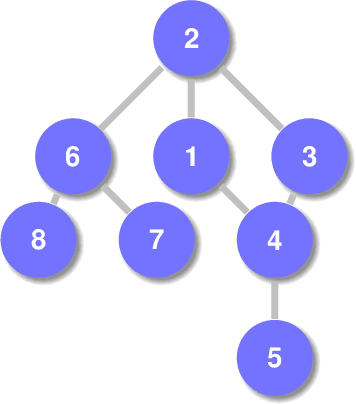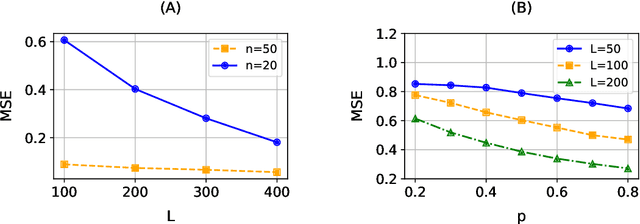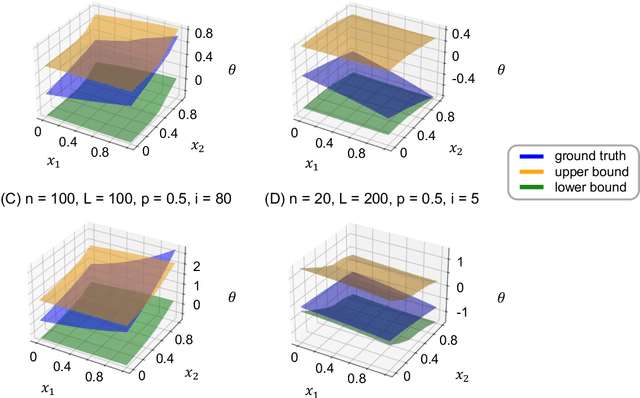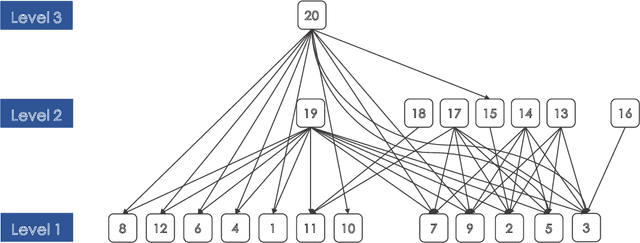Yi Han
Independent Researcher, Australia
TIGeR: Tool-Integrated Geometric Reasoning in Vision-Language Models for Robotics
Oct 08, 2025Abstract:Vision-Language Models (VLMs) have shown remarkable capabilities in spatial reasoning, yet they remain fundamentally limited to qualitative precision and lack the computational precision required for real-world robotics. Current approaches fail to leverage metric cues from depth sensors and camera calibration, instead reducing geometric problems to pattern recognition tasks that cannot deliver the centimeter-level accuracy essential for robotic manipulation. We present TIGeR (Tool-Integrated Geometric Reasoning), a novel framework that transforms VLMs from perceptual estimators to geometric computers by enabling them to generate and execute precise geometric computations through external tools. Rather than attempting to internalize complex geometric operations within neural networks, TIGeR empowers models to recognize geometric reasoning requirements, synthesize appropriate computational code, and invoke specialized libraries for exact calculations. To support this paradigm, we introduce TIGeR-300K, a comprehensive tool-invocation-oriented dataset covering point transformations, pose estimation, trajectory generation, and spatial compatibility verification, complete with tool invocation sequences and intermediate computations. Through a two-stage training pipeline combining supervised fine-tuning (SFT) and reinforcement fine-tuning (RFT) with our proposed hierarchical reward design, TIGeR achieves SOTA performance on geometric reasoning benchmarks while demonstrating centimeter-level precision in real-world robotic manipulation tasks.
RoboBrain 2.0 Technical Report
Jul 02, 2025Abstract:We introduce RoboBrain 2.0, our latest generation of embodied vision-language foundation models, designed to unify perception, reasoning, and planning for complex embodied tasks in physical environments. It comes in two variants: a lightweight 7B model and a full-scale 32B model, featuring a heterogeneous architecture with a vision encoder and a language model. Despite its compact size, RoboBrain 2.0 achieves strong performance across a wide spectrum of embodied reasoning tasks. On both spatial and temporal benchmarks, the 32B variant achieves leading results, surpassing prior open-source and proprietary models. In particular, it supports key real-world embodied AI capabilities, including spatial understanding (e.g., affordance prediction, spatial referring, trajectory forecasting) and temporal decision-making (e.g., closed-loop interaction, multi-agent long-horizon planning, and scene graph updating). This report details the model architecture, data construction, multi-stage training strategies, infrastructure and practical applications. We hope RoboBrain 2.0 advances embodied AI research and serves as a practical step toward building generalist embodied agents. The code, checkpoint and benchmark are available at https://superrobobrain.github.io.
RoboRefer: Towards Spatial Referring with Reasoning in Vision-Language Models for Robotics
Jun 04, 2025Abstract:Spatial referring is a fundamental capability of embodied robots to interact with the 3D physical world. However, even with the powerful pretrained vision language models (VLMs), recent approaches are still not qualified to accurately understand the complex 3D scenes and dynamically reason about the instruction-indicated locations for interaction. To this end, we propose RoboRefer, a 3D-aware VLM that can first achieve precise spatial understanding by integrating a disentangled but dedicated depth encoder via supervised fine-tuning (SFT). Moreover, RoboRefer advances generalized multi-step spatial reasoning via reinforcement fine-tuning (RFT), with metric-sensitive process reward functions tailored for spatial referring tasks. To support SFT and RFT training, we introduce RefSpatial, a large-scale dataset of 20M QA pairs (2x prior), covering 31 spatial relations (vs. 15 prior) and supporting complex reasoning processes (up to 5 steps). In addition, we introduce RefSpatial-Bench, a challenging benchmark filling the gap in evaluating spatial referring with multi-step reasoning. Experiments show that SFT-trained RoboRefer achieves state-of-the-art spatial understanding, with an average success rate of 89.6%. RFT-trained RoboRefer further outperforms all other baselines by a large margin, even surpassing Gemini-2.5-Pro by 17.4% in average accuracy on RefSpatial-Bench. Notably, RoboRefer can be integrated with various control policies to execute long-horizon, dynamic tasks across diverse robots (e,g., UR5, G1 humanoid) in cluttered real-world scenes.
FinTagging: An LLM-ready Benchmark for Extracting and Structuring Financial Information
May 27, 2025Abstract:We introduce FinTagging, the first full-scope, table-aware XBRL benchmark designed to evaluate the structured information extraction and semantic alignment capabilities of large language models (LLMs) in the context of XBRL-based financial reporting. Unlike prior benchmarks that oversimplify XBRL tagging as flat multi-class classification and focus solely on narrative text, FinTagging decomposes the XBRL tagging problem into two subtasks: FinNI for financial entity extraction and FinCL for taxonomy-driven concept alignment. It requires models to jointly extract facts and align them with the full 10k+ US-GAAP taxonomy across both unstructured text and structured tables, enabling realistic, fine-grained evaluation. We assess a diverse set of LLMs under zero-shot settings, systematically analyzing their performance on both subtasks and overall tagging accuracy. Our results reveal that, while LLMs demonstrate strong generalization in information extraction, they struggle with fine-grained concept alignment, particularly in disambiguating closely related taxonomy entries. These findings highlight the limitations of existing LLMs in fully automating XBRL tagging and underscore the need for improved semantic reasoning and schema-aware modeling to meet the demands of accurate financial disclosure. Code is available at our GitHub repository and data is at our Hugging Face repository.
AIS Data-Driven Maritime Monitoring Based on Transformer: A Comprehensive Review
May 12, 2025



Abstract:With the increasing demands for safety, efficiency, and sustainability in global shipping, Automatic Identification System (AIS) data plays an increasingly important role in maritime monitoring. AIS data contains spatial-temporal variation patterns of vessels that hold significant research value in the marine domain. However, due to its massive scale, the full potential of AIS data has long remained untapped. With its powerful sequence modeling capabilities, particularly its ability to capture long-range dependencies and complex temporal dynamics, the Transformer model has emerged as an effective tool for processing AIS data. Therefore, this paper reviews the research on Transformer-based AIS data-driven maritime monitoring, providing a comprehensive overview of the current applications of Transformer models in the marine field. The focus is on Transformer-based trajectory prediction methods, behavior detection, and prediction techniques. Additionally, this paper collects and organizes publicly available AIS datasets from the reviewed papers, performing data filtering, cleaning, and statistical analysis. The statistical results reveal the operational characteristics of different vessel types, providing data support for further research on maritime monitoring tasks. Finally, we offer valuable suggestions for future research, identifying two promising research directions. Datasets are available at https://github.com/eyesofworld/Maritime-Monitoring.
Lightweight Defense Against Adversarial Attacks in Time Series Classification
May 04, 2025Abstract:As time series classification (TSC) gains prominence, ensuring robust TSC models against adversarial attacks is crucial. While adversarial defense is well-studied in Computer Vision (CV), the TSC field has primarily relied on adversarial training (AT), which is computationally expensive. In this paper, five data augmentation-based defense methods tailored for time series are developed, with the most computationally intensive method among them increasing the computational resources by only 14.07% compared to the original TSC model. Moreover, the deployment process for these methods is straightforward. By leveraging these advantages of our methods, we create two combined methods. One of these methods is an ensemble of all the proposed techniques, which not only provides better defense performance than PGD-based AT but also enhances the generalization ability of TSC models. Moreover, the computational resources required for our ensemble are less than one-third of those required for PGD-based AT. These methods advance robust TSC in data mining. Furthermore, as foundation models are increasingly explored for time series feature learning, our work provides insights into integrating data augmentation-based adversarial defense with large-scale pre-trained models in future research.
NeRF-Based Transparent Object Grasping Enhanced by Shape Priors
Apr 14, 2025Abstract:Transparent object grasping remains a persistent challenge in robotics, largely due to the difficulty of acquiring precise 3D information. Conventional optical 3D sensors struggle to capture transparent objects, and machine learning methods are often hindered by their reliance on high-quality datasets. Leveraging NeRF's capability for continuous spatial opacity modeling, our proposed architecture integrates a NeRF-based approach for reconstructing the 3D information of transparent objects. Despite this, certain portions of the reconstructed 3D information may remain incomplete. To address these deficiencies, we introduce a shape-prior-driven completion mechanism, further refined by a geometric pose estimation method we have developed. This allows us to obtain a complete and reliable 3D information of transparent objects. Utilizing this refined data, we perform scene-level grasp prediction and deploy the results in real-world robotic systems. Experimental validation demonstrates the efficacy of our architecture, showcasing its capability to reliably capture 3D information of various transparent objects in cluttered scenes, and correspondingly, achieve high-quality, stables, and executable grasp predictions.
Ranking of Large Language Model with Nonparametric Prompts
Dec 07, 2024



Abstract:We consider the inference for the ranking of large language models (LLMs). Alignment arises as a big challenge to mitigate hallucinations in the use of LLMs. Ranking LLMs has been shown as a well-performing tool to improve alignment based on the best-of-$N$ policy. In this paper, we propose a new inferential framework for testing hypotheses and constructing confidence intervals of the ranking of language models. We consider the widely adopted Bradley-Terry-Luce (BTL) model, where each item is assigned a positive preference score that determines its pairwise comparisons' outcomes. We further extend it into the contextual setting, where the score of each model varies with the prompt. We show the convergence rate of our estimator. By extending the current Gaussian multiplier bootstrap theory to accommodate the supremum of not identically distributed empirical processes, we construct the confidence interval for ranking and propose a valid testing procedure. We also introduce the confidence diagram as a global ranking property. We conduct numerical experiments to assess the performance of our method.
A Dual-Channel Particle Swarm Optimization Algorithm Based on Adaptive Balance Search
Jun 25, 2024Abstract:The balance between exploration (Er) and exploitation (Ei) determines the generalization performance of the particle swarm optimization (PSO) algorithm on different problems. Although the insufficient balance caused by global best being located near a local minimum has been widely researched, few scholars have systematically paid attention to two behaviors about personal best position (P) and global best position (G) existing in PSO. 1) P's uncontrollable-exploitation and involuntary-exploration guidance behavior. 2) G's full-time and global guidance behavior, each of which negatively affects the balance of Er and Ei. With regards to this, we firstly discuss the two behaviors, unveiling the mechanisms by which they affect the balance, and further pinpoint three key points for better balancing Er and Ei: eliminating the coupling between P and G, empowering P with controllable-exploitation and voluntary-exploration guidance behavior, controlling G's full-time and global guidance behavior. Then, we present a dual-channel PSO algorithm based on adaptive balance search (DCPSO-ABS). This algorithm entails a dual-channel framework to mitigate the interaction of P and G, aiding in regulating the behaviors of P and G, and meanwhile an adaptive balance search strategy for empowering P with voluntary-exploration and controllable-exploitation guidance behavior as well as adaptively controlling G's full-time and global guidance behavior. Finally, three kinds of experiments on 57 benchmark functions are designed to demonstrate that our proposed algorithm has stronger generalization performance than selected state-of-the-art algorithms.
Through the Lens of Core Competency: Survey on Evaluation of Large Language Models
Aug 15, 2023Abstract:From pre-trained language model (PLM) to large language model (LLM), the field of natural language processing (NLP) has witnessed steep performance gains and wide practical uses. The evaluation of a research field guides its direction of improvement. However, LLMs are extremely hard to thoroughly evaluate for two reasons. First of all, traditional NLP tasks become inadequate due to the excellent performance of LLM. Secondly, existing evaluation tasks are difficult to keep up with the wide range of applications in real-world scenarios. To tackle these problems, existing works proposed various benchmarks to better evaluate LLMs. To clarify the numerous evaluation tasks in both academia and industry, we investigate multiple papers concerning LLM evaluations. We summarize 4 core competencies of LLM, including reasoning, knowledge, reliability, and safety. For every competency, we introduce its definition, corresponding benchmarks, and metrics. Under this competency architecture, similar tasks are combined to reflect corresponding ability, while new tasks can also be easily added into the system. Finally, we give our suggestions on the future direction of LLM's evaluation.
 Add to Chrome
Add to Chrome Add to Firefox
Add to Firefox Add to Edge
Add to Edge